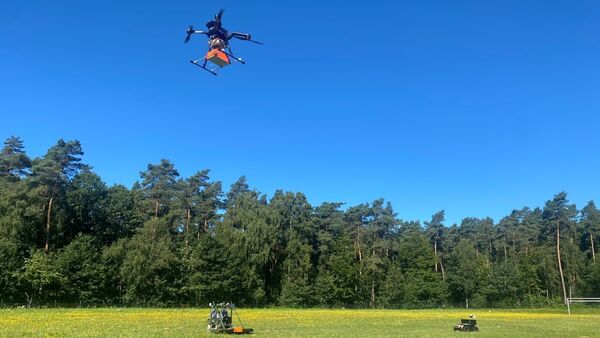
A quadcopter co-ordinating autonomously alongside a UGV in a de-mining exercise in Belgium in September 2023, supported by the European Defence Agency. (European Defence Agency)
A de-mining exercise involving an unmanned aerial vehicle (UAV) and two unmanned ground vehicles (UGVs) was held in Belgium in September to assess the application of artificial intelligence (AI) for improvised explosive device (IED) detection.
The exercise, supported by the European Defence Agency (EDA) and announced on 2 October, involved a quadcopter and two UGVs co-ordinating together autonomously to detect mock IEDs, including unexploded ordnance in rural and urban environments.
The EUR1.55 million (USD1.64 million) programme – Artificial Intelligence for Detection of Explosive Devices (AIDED) – was intended to demonstrate the maturity of the systems (currently TRL 3-4) and assess the application of AI for IED detection, the announcement detailed.
An EDA spokesperson was unable to disclose to Janes the vehicles used in the demonstration but noted that the platforms were equipped with a ground penetrating radar; RGBD (red, green, blue, depth) cameras; light detection and ranging (LIDAR); and a laser-induced breakdown spectroscopy device. Further details regarding the sensors were not provided.
While the trial was effective at demonstrating the application of AI for IED detection, soil humidity, high temperatures, and the movement of the vehicles affected the sensors' sensitivity. Autonomous navigation was also an issue, the announcement noted.
A follow-up project is expected to start in December 2023 called AIDEDex. The project is part of three other programmes that seek to determine how best to deploy autonomous vehicles, sensors, and data processing for detecting mines and IEDs, the spokesperson detailed.
Looking to read the full article?
Gain unlimited access to Janes news and more...







